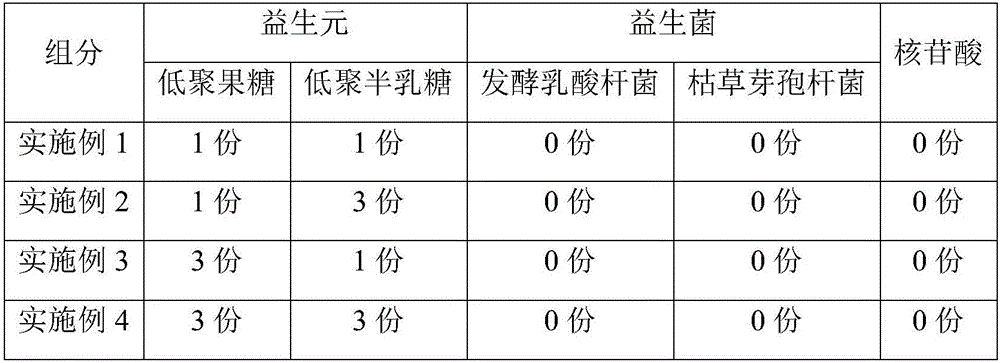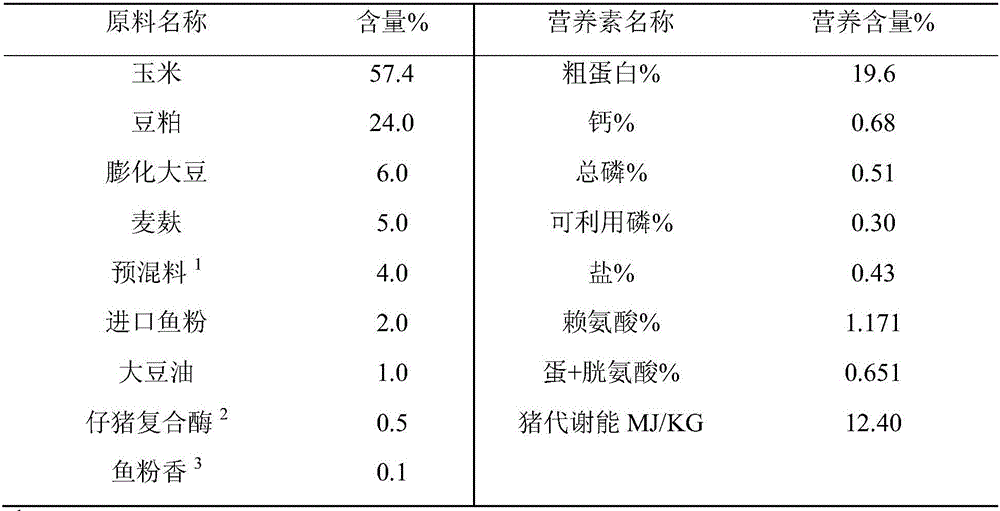Feed additive capable of promoting development of intestinal tracts of weaning piglets
A technology for feed additives and intestinal development, applied in animal feed, animal feed, additional food elements, etc., can solve problems such as lack of endogenous nucleotides, reduce diarrhea, increase feed conversion rate, and improve intestinal tract The effect of development
- Summary
- Abstract
- Description
- Claims
- Application Information
AI Technical Summary
Problems solved by technology
Method used
Image
Examples
Embodiment 1~4
[0031] The composition ratio of feed additives is shown in Table 1, and parts are parts by weight.
[0032] Table 1
[0033]
Embodiment 5
[0035] Test animals and groups:
[0036] A total of 300 weaned piglets with similar body weight and about 30 days old were selected and randomly divided into 5 groups according to their initial body weight, which were control group and experimental group 1-5. There were 6 replicates in each group, and 10 pigs in each replicate. Each treatment was fed with the corresponding ration, and the whole test was free to eat and drink. The feeding and management methods were determined according to the specific conditions of the test site.
[0037] Control group: the basal diet was determined according to the conditions of the test site, without any change, and its formula and nutritional components are shown in Table 2;
[0038] Test group 1: Add 0.1wt% of the feed additive in Example 1 to the basic diet formula;
[0039] Test group 2: Add 0.1wt% of the feed additive in Example 2 to the basic diet formula;
[0040] Test group 3: Add 0.1wt% of the feed additive in Example 3 to the bas...
Embodiment 6~9
[0053] The composition ratio of feed additives is shown in Table 4, and parts are parts by weight.
[0054] Table 4
[0055]
PUM
 Login to View More
Login to View More Abstract
Description
Claims
Application Information
 Login to View More
Login to View More - R&D
- Intellectual Property
- Life Sciences
- Materials
- Tech Scout
- Unparalleled Data Quality
- Higher Quality Content
- 60% Fewer Hallucinations
Browse by: Latest US Patents, China's latest patents, Technical Efficacy Thesaurus, Application Domain, Technology Topic, Popular Technical Reports.
© 2025 PatSnap. All rights reserved.Legal|Privacy policy|Modern Slavery Act Transparency Statement|Sitemap|About US| Contact US: help@patsnap.com



